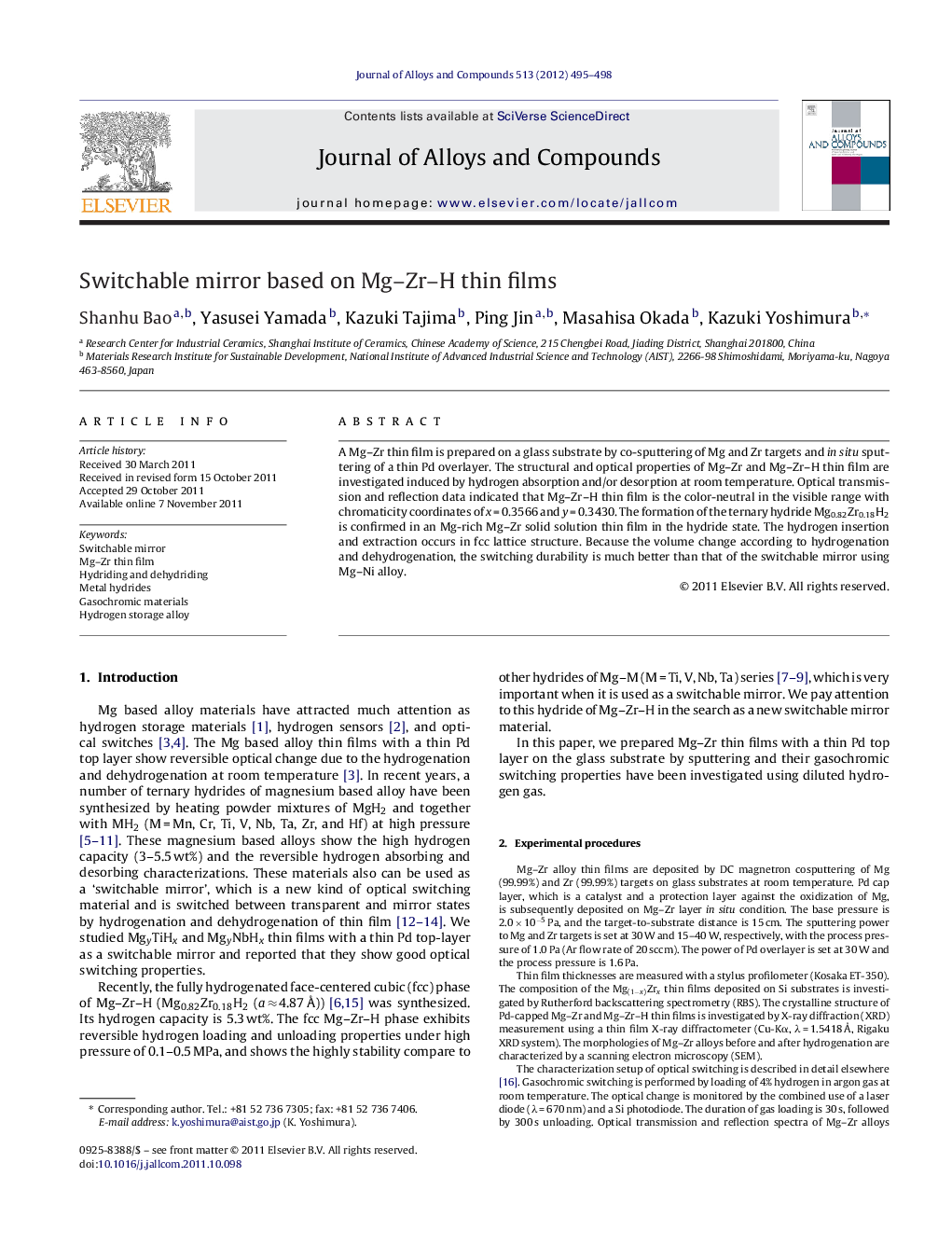| Article ID | Journal | Published Year | Pages | File Type |
|---|---|---|---|---|
| 1616505 | Journal of Alloys and Compounds | 2012 | 4 Pages |
A Mg–Zr thin film is prepared on a glass substrate by co-sputtering of Mg and Zr targets and in situ sputtering of a thin Pd overlayer. The structural and optical properties of Mg–Zr and Mg–Zr–H thin film are investigated induced by hydrogen absorption and/or desorption at room temperature. Optical transmission and reflection data indicated that Mg–Zr–H thin film is the color-neutral in the visible range with chromaticity coordinates of x = 0.3566 and y = 0.3430. The formation of the ternary hydride Mg0.82Zr0.18H2 is confirmed in an Mg-rich Mg–Zr solid solution thin film in the hydride state. The hydrogen insertion and extraction occurs in fcc lattice structure. Because the volume change according to hydrogenation and dehydrogenation, the switching durability is much better than that of the switchable mirror using Mg–Ni alloy.
► A 40 nm-thick Mg–Zr thin film with a Pd top-layer was deposited on glass by magnetron sputtering at room temperature. ► The change in structure and optical properties of the Mg–Zr film was investigated by inducing hydrogen absorption/desorption. ► It was found that a ternary hydride of Mg0.82Zr0.18H2 was formed from the Mg-rich Mg–Zr solid solution when undergoing the hydride state. ► Such a Mg–Zr–H thin film at the transparent state is characterized by a color-neutral appearance in the visible range with chromaticity coordinates of x = 0.3566 and x = 0.3430.
